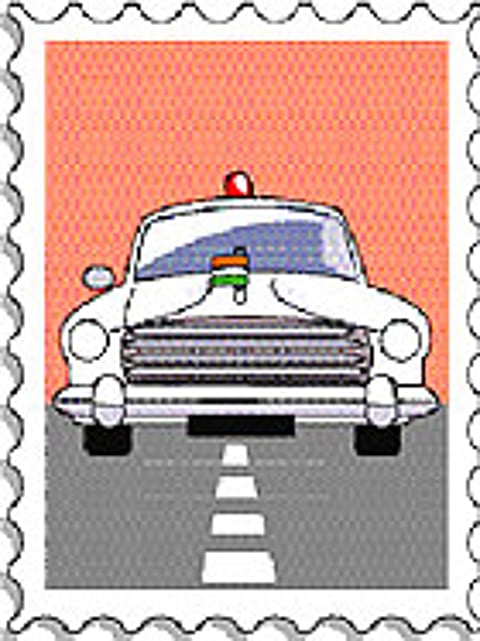His Peloponnesian Labour
Delhi Diary
Way back in 1992 I found Manmohan Singh gentle, self-deprecating and a storehouse of quotes from Greek philosophers. That these qualities do not shine on the 24-hour news channels is not a surprise.

If the image India enjoys elsewhere in the world is still largely that of a vibrant democracy and an emerging economic powerhouse, we have two men to thank. Nehru, for the role he played in laying the foundation for a secular democracy—with his regular attendance in Parliament, for instance, and his fortnightly letters to chief ministers—deserves more credit than he gets these days. And Manmohan Singh, whose reforms in the early ’90s unleashed more dynamism in a decade than we had seen in the previous four. I was still in my twenties when I first interviewed Manmohan Singh just after he brought out his second budget in 1992, for the US business magazine Fortune. I suffered an attack of nerves and clammed up as soon as I entered the tennis-court-sized office of the finance minister, but Manmohan Singh was gentle, self-deprecating and a storehouse of quotes from Greek philosophers. That these qualities do not shine on the 24-hour news channels is not a surprise.
That he has failed at the second hurdle—reforming our bureaucracy, modernising our lagging agricultural economy and transforming the delivery of public services like education and healthcare, not to mention dealing more energetically with corruption—certainly belies his weaknesses as a leader. Then again, the challenge of making our bureaucrats behave less like imperial rulers and more like public servants or getting teachers in village schools in UP to even show up for work requires a radical change in national character. I would wager that was an ask well beyond even a leader with the leadership qualities of Margaret Thatcher, Bill Clinton and Deng Xiaoping combined. And, in any case, it is not so much our irate middle class, but our all-too-patient poor who quietly suffer from being at the receiving end of what one academic has called India’s ‘flailing state’. They would be even worse off had the economy not grown as fast in the last twenty years.
Right To (What) Education?
Countries like China and Indonesia are arguably just as corrupt as India is, but where we fall well behind them is on our record on primary education. Now comes a PROBE report that says primary education in the BIMARU states is on par with that in Afghanistan. I was reminded that even this is only part of the problem on a visit to a government school in Karol Bagh. A class of eight-year-olds looked so scrawny they could have been five. The poor nutrition that characterises many of our children’s lives means their retention levels are much lower than they otherwise would be. We are shortchanging their futures and they are too young to protest.
Catwalk Coup (de Grace)
I was napping one Sunday afternoon when a friend called to invite me to one of the shows during Delhi’s couture week. How unoriginal our fashion renaissance seemed. There are village women in Rajasthan and grandmothers in Chennai who look better dressed than our models. It does not help matters any that all the embellishments and over-the-top zari work aimed at the all-important wedding market make the ghagra choli seem more like a medieval soldier’s armour.
Watching the droves of sari-clad models wearing platform heels stride down the catwalk with all the grace of camels, I grandly declared to a friend of a friend that she should have been up there in the lights instead. As it turned out, she was a New York-returned model named Lakshmi Menon. The paparazzi were soon hot on her heels. I looked nonchalant, while preening inwardly at the possibility of making it to Page 3. Well, good taste prevailed; they cropped me out.
Magic Is Infectious
Like a drunken sailor being refused one final drink at one bar after another, I had tripped from Bahri & Sons in Khan Market to The Bookshop in Jor Bagh asking for a copy of Karma Cola. However, Gita Mehta’s inimitable send-up of all the confusion that resulted when the hippies of the 1970s collided with our army of yogis is inexplicably out of print in India. Then, browsing one evening in The Book Shop, I happened to meet Gita. Ever the acolyte, I pleaded with her for a 21st century satire on our ‘Age of Ambani’. How else to make (non)sense of Synergy Couture week and the Diageo world bartenders’ competition in New Delhi in July?
Generally, it was a good week for chance meetings. Only days later, I met the artist Krishen Khanna along with a friend, the son of a former colleague of Khanna’s. In the mid-1990s, I was gifted a painting of Khanna’s, that of a sarangi player. Its creator, it turns out, looks to be 86 going on 46. Decades ago, when he resigned from Grindlays to pursue a career as an artist, his bosses, convinced he had had a momentary loss of sanity, ignored his resignation letter and transferred him to a new job and a plush apartment in Mumbai instead. There, he befriended Salman Rushdie’s father and drew sketches of elephants for the novelist’s crib. Magical realism, I realised, can also result when one generation passes on its stories to another.